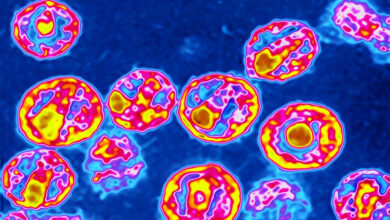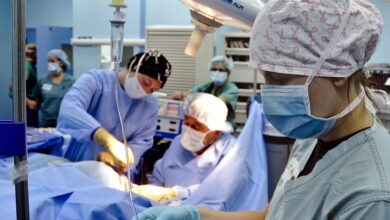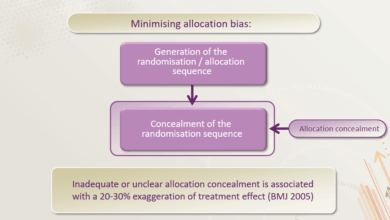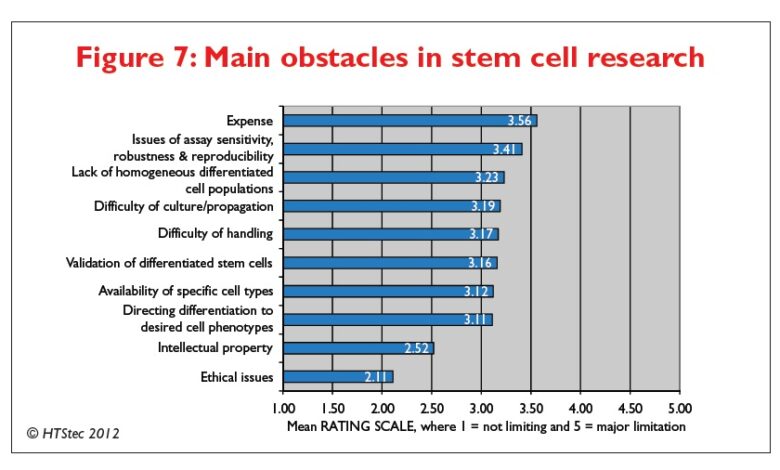
Stem cell research advancing rapidly is revolutionizing medicine and biology. This exciting field is exploring the potential of various stem cell types – from embryonic to induced pluripotent – each with unique characteristics. From early experiments to modern breakthroughs, we’ll delve into the methods, applications, ethical considerations, and future predictions of this rapidly evolving area.
The journey begins with an understanding of the core concepts, historical context, and key milestones. We’ll examine the different types of stem cells, their potential applications, and the ethical considerations surrounding their use. This exploration will be supported by clear examples, tables summarizing key findings, and a comprehensive comparison of methods. Further, the profound impact on human health and well-being will be addressed.
Introduction to Stem Cell Research: Stem Cell Research Advancing Rapidly
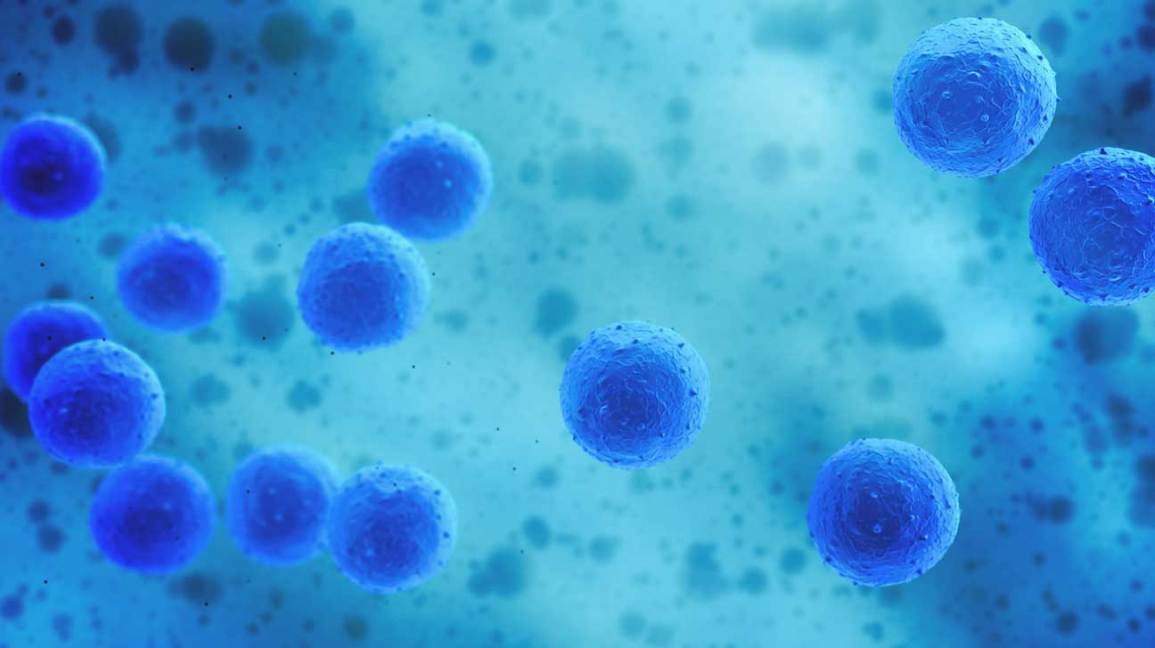
Stem cell research is a rapidly evolving field with the potential to revolutionize medicine and biology. At its core, this research delves into the fascinating world of undifferentiated cells capable of self-renewal and differentiation into various specialized cell types. Understanding these cells and their remarkable abilities is crucial for developing treatments for a wide array of diseases and injuries.This research explores the fundamental principles governing cell development, growth, and regeneration.
The ultimate objective is to harness the power of stem cells to repair damaged tissues, regenerate organs, and develop novel therapies for currently incurable diseases.
Types of Stem Cells
Stem cells are broadly categorized based on their potency, or the extent of cell types they can differentiate into. Understanding these distinctions is vital to appreciating the unique applications and limitations of each type.
- Embryonic Stem Cells (ESCs): Derived from the inner cell mass of a blastocyst, a very early-stage embryo, ESCs possess the remarkable ability to differentiate into virtually any cell type in the body. This pluripotency makes them a promising resource for regenerative medicine.
- Induced Pluripotent Stem Cells (iPSCs): Scientists can reprogram adult somatic cells (e.g., skin cells) into a pluripotent state by introducing specific genes. This technique circumvents the ethical concerns associated with embryonic stem cell research, offering an alternative source for studying diseases and developing treatments.
- Adult Stem Cells (ASCs): Found in various tissues throughout the body, adult stem cells are multipotent, meaning they can differentiate into a limited range of cell types within their specific tissue lineage. Examples include hematopoietic stem cells (HSCs), which give rise to blood cells, and mesenchymal stem cells (MSCs), which can differentiate into bone, cartilage, and fat.
Historical Context of Stem Cell Research
The journey of stem cell research is marked by significant milestones and advancements, reflecting the evolving understanding of these remarkable cells.
- Early Observations: The initial understanding of stem cells emerged through observations of tissue regeneration in various organisms. Researchers noticed the capacity of certain cells to give rise to diverse cell types, laying the groundwork for future discoveries.
- The Isolation of Hematopoietic Stem Cells: Significant breakthroughs occurred in the mid-20th century with the isolation and characterization of hematopoietic stem cells (HSCs). This discovery revolutionized blood cancer treatments and paved the way for further investigation into other stem cell types.
- The Discovery of Embryonic Stem Cells: The isolation of embryonic stem cells in the 1980s was a pivotal moment. This opened a new avenue for exploring the potential of pluripotent cells for therapeutic applications.
- The Development of iPSCs: The development of iPSC technology in the early 2000s provided an ethically more acceptable alternative to embryonic stem cells. This breakthrough significantly advanced stem cell research by offering a source of pluripotent cells without raising ethical concerns.
Examples of Early Experiments and Breakthroughs
Early experiments in stem cell biology laid the foundation for the advancements seen today.
- Regeneration in Planaria: Studies of planaria regeneration demonstrated the remarkable capacity of some organisms to regenerate lost tissues, inspiring researchers to investigate the underlying mechanisms in more complex organisms like humans.
- Culturing Hematopoietic Stem Cells: Early experiments on culturing HSCs allowed scientists to understand their properties and potential for treating blood disorders. This demonstrated the possibility of controlling the differentiation of stem cells in a laboratory setting.
Stem Cell Types and their Potential Applications
| Stem Cell Type | Source | Potential Applications | Ethical Considerations |
|---|---|---|---|
| Embryonic Stem Cells (ESCs) | Inner cell mass of blastocyst | Regenerative medicine, disease modeling, drug screening | Ethical concerns regarding embryo destruction |
| Induced Pluripotent Stem Cells (iPSCs) | Adult somatic cells | Disease modeling, drug screening, personalized medicine | Potential for tumor formation, safety concerns |
| Adult Stem Cells (ASCs) | Various tissues (bone marrow, adipose tissue) | Tissue repair, organ regeneration, cell therapy | Limited differentiation potential compared to ESCs and iPSCs |
| Mesenchymal Stem Cells (MSCs) | Bone marrow, adipose tissue | Treatment of various diseases (arthritis, spinal cord injury) | Immune response variability, potential for tumor formation |
Rapid Advancement in Techniques

Stem cell research is experiencing a period of unprecedented growth, driven by innovative techniques that are revolutionizing our understanding and application of these remarkable cells. These advancements hold immense promise for treating a wide range of diseases and conditions, and the pace of progress continues to accelerate. The methods used in stem cell research have become increasingly sophisticated, allowing for more precise control over cell behavior and differentiation.
Stem cell research is making incredible strides, offering potential cures for a wide range of diseases. However, the alarming rise in alcohol-related deaths, as detailed in this article ( alcohol related deaths double in two decades ), highlights a crucial societal need for preventative measures alongside these promising medical advancements. This sobering statistic underscores the importance of focusing on both physical and mental health, and the need for continued research in stem cell therapies remains critical.
Methods Used in Stem Cell Research
The field of stem cell research relies on a variety of techniques, each with its own strengths and limitations. These techniques have significantly improved over time, enabling scientists to isolate, culture, and differentiate stem cells with greater efficiency and precision. The refinement of these methods is critical to advancing our ability to harness the therapeutic potential of stem cells.
- Isolation and Culture: Methods for isolating and culturing stem cells have evolved dramatically. Initially, isolation relied on laborious manual techniques. Modern methods leverage sophisticated cell sorting technologies like fluorescence-activated cell sorting (FACS), enabling the precise selection of specific stem cell populations. This increased precision translates to higher purity and yields, facilitating further research. Advanced culture media formulations and growth factors are also vital in supporting optimal stem cell proliferation and maintaining their pluripotency.
- Stem Cell Differentiation: A critical aspect of stem cell research is directing them towards specific cell types. The techniques for inducing differentiation have improved significantly, moving beyond simple culture conditions to include the use of signaling molecules, growth factors, and even biomaterials. Precise control over differentiation is crucial for generating functional cells for transplantation. Several approaches exist, including directed differentiation protocols using specific growth factors, and the use of bioengineered scaffolds to mimic the natural microenvironment of the target tissue.
Technologies Driving Progress
Several key technologies are driving rapid progress in stem cell research. Their integration is transforming the field, enabling researchers to manipulate stem cells with unprecedented precision and control.
- CRISPR-Cas9 Gene Editing: CRISPR technology allows for precise gene editing, enabling researchers to modify the genetic makeup of stem cells. This technology is crucial for understanding gene function and for correcting genetic defects that cause disease. For example, correcting mutations in disease-causing genes in induced pluripotent stem cells (iPSCs) holds tremendous promise for treating genetic disorders.
- 3D Bioprinting: 3D bioprinting is emerging as a powerful tool for creating complex tissue structures from stem cells. This technology allows for the precise placement of cells and materials, enabling the creation of tissues and organs with desired architectures. The creation of functional tissues and organs for transplantation is a significant application.
Comparison of Differentiation Methods
Different methods for inducing stem cell differentiation offer varying degrees of control and efficiency. Careful consideration of these factors is critical in choosing the optimal approach for a given application.
| Differentiation Method | Effectiveness | Efficiency | Advantages | Disadvantages |
|---|---|---|---|---|
| Growth factor-based differentiation | Moderate | Variable | Relatively easy to implement | Limited control over differentiation |
| Directed differentiation protocols | High | Moderate | High degree of control | Can be complex and time-consuming |
| Biomaterial-based differentiation | High | High | Mimics natural microenvironment | Requires sophisticated fabrication techniques |
Applications and Impact of Advancements
Stem cell research is rapidly transforming our understanding of human biology and offering exciting possibilities for treating a wide range of diseases. The advancements in techniques, as previously discussed, are paving the way for innovative applications in medicine, potentially revolutionizing healthcare. This exploration delves into the diverse applications of stem cell research, emphasizing its impact on human health and the potential of personalized medicine.The potential of stem cells extends far beyond simple tissue repair.
By understanding how stem cells differentiate and function, scientists can develop new treatments for diseases currently considered incurable. The field is no longer confined to theoretical concepts; successful therapies and ongoing clinical trials are demonstrating the practical benefits of this research.
Regenerative Medicine Applications
Stem cell therapies hold immense promise for regenerative medicine, aiming to repair or replace damaged tissues and organs. This involves utilizing stem cells to regenerate damaged tissues or organs, thereby restoring function. The body’s own regenerative capacity is often hampered by injury or disease, and stem cell therapies can potentially overcome these limitations. For example, researchers are investigating the use of stem cells to repair damaged hearts after a heart attack, potentially restoring the damaged heart muscle and improving cardiac function.
This could significantly reduce the need for organ transplants, a process with numerous challenges and limitations.
Disease Modeling and Drug Discovery
Stem cells can be used to create disease models in the lab. These models can mimic specific diseases, allowing researchers to study the disease’s progression and develop new treatments. By creating models of human diseases using stem cells, scientists can test new drugs and therapies in a controlled environment, potentially leading to more effective and safer treatments. The potential for personalized medicine is also significant, as stem cells derived from a patient’s own cells can be used to create a personalized disease model, allowing for more targeted therapies.
Personalized Medicine Approaches
Personalized medicine leverages an individual’s unique genetic makeup and other factors to tailor treatments. Stem cell research plays a critical role in this approach. Stem cells derived from a patient’s own cells can be used to create a customized disease model or to create specific cell types for treatment. This precision approach has the potential to significantly improve treatment efficacy and reduce adverse effects.
Stem cell research is buzzing with breakthroughs, and the potential applications are truly mind-blowing. Considering how crucial early detection is for diseases like diabetes and heart disease, it’s natural to wonder about preventative measures, like the role of schools in screening children. For example, should schools screen children for diabetes and heart disease? This question is sparking a lot of debate, and exploring the pros and cons is important.
should schools screen children for diabetes heart disease Ultimately, the rapid advancements in stem cell research could offer even more powerful tools for treating these diseases in the future.
The development of personalized therapies is a major goal, and stem cell research is at the forefront of this innovation.
Successful Stem Cell Therapies and Clinical Trials
Several successful stem cell therapies and ongoing clinical trials demonstrate the practical application of this technology. One notable example is the use of stem cells to treat certain types of spinal cord injuries, aiming to promote nerve regeneration and functional recovery. These advancements represent a major step forward in the field of regenerative medicine.
Table of Diseases Targeted by Stem Cell Therapies, Stem cell research advancing rapidly
| Disease | Expected Outcome | Current Stage of Research |
|---|---|---|
| Parkinson’s Disease | Regeneration of dopamine-producing neurons, reducing symptoms | Phase 1 and 2 clinical trials underway |
| Diabetic Retinopathy | Regeneration of damaged retinal cells, improving vision | Pre-clinical studies showing promising results |
| Heart Failure | Regeneration of heart muscle, improving cardiac function | Phase 2 clinical trials in progress |
| Spinal Cord Injury | Promotion of nerve regeneration, improving functional recovery | Phase 3 clinical trials and successful treatments |
Ethical Considerations and Challenges
Stem cell research, while offering remarkable potential for treating a wide range of diseases, faces significant ethical hurdles, particularly concerning the source and use of embryonic stem cells. The very nature of extracting these cells from embryos raises complex philosophical and moral questions that demand careful consideration. Navigating these ethical complexities is crucial to ensuring responsible and beneficial advancements in the field.
Ethical Implications of Embryonic Stem Cells
The use of embryonic stem cells sparks intense ethical debate due to the destruction of an embryo. Different perspectives weigh the potential benefits of treating diseases against the moral status of the embryo. Some argue that the potential for alleviating human suffering justifies the use of embryonic stem cells, while others maintain that destroying an embryo is morally wrong, regardless of the potential benefits.
The debate extends to the very definition of life and the moral worth of an embryo.
Stem cell research is buzzing with advancements, offering exciting possibilities for treating a variety of diseases. However, as we delve into the complexities of conditions like long COVID, the question arises: will long covid create a new wave of chronic fatigue syndrome? This article explores the potential link, and while the answers are still emerging, the rapid progress in stem cell research offers a promising path forward to address these potential future challenges.
The potential applications of this research are truly remarkable.
Regulatory Frameworks Surrounding Stem Cell Research
Governments and international bodies have established regulatory frameworks to guide and oversee stem cell research. These regulations aim to balance the potential benefits of research with the ethical considerations. For example, many countries have specific guidelines for the creation and use of human embryos for research purposes, often requiring rigorous ethical review boards. Strict oversight is intended to prevent unethical practices and ensure the responsible advancement of the field.
The regulations often involve obtaining informed consent from donors and ensuring the safety and well-being of the cells.
Comparison of Ethical Viewpoints
Various ethical viewpoints exist regarding stem cell research, each with nuanced perspectives. Utilitarian ethics, for instance, prioritize the greatest good for the greatest number, potentially justifying the use of embryonic stem cells if it leads to a significant reduction in human suffering. Conversely, deontological ethics emphasizes adherence to moral duties and principles, often arguing against the destruction of an embryo, regardless of the potential benefits.
These contrasting perspectives highlight the complexity of ethical decision-making in the field.
Potential Risks and Safety Concerns
Stem cell therapies, while promising, present potential risks. Immunological rejection of transplanted cells can occur if the donor and recipient are not a perfect match. Also, the possibility of tumor formation due to uncontrolled cell growth is a significant concern. Furthermore, the long-term effects of stem cell therapies are not always fully understood. Extensive testing and careful monitoring are essential to mitigate these risks.
Research protocols must adhere to strict safety guidelines to minimize potential harm.
Ethical Dilemmas and Potential Solutions
| Ethical Dilemma | Perspective | Potential Solution |
|---|---|---|
| Embryo destruction in embryonic stem cell research | Moral objection to embryo destruction | Exploring alternative sources of stem cells, such as induced pluripotent stem cells (iPSCs), which avoid the destruction of embryos. |
| Potential for tumor formation | Safety concerns regarding uncontrolled cell growth | Developing methods to ensure the safe and controlled differentiation of stem cells, and rigorous testing protocols. |
| Informed consent and donor rights | Ensuring the rights and well-being of donors | Implementing strict guidelines and regulations regarding informed consent for stem cell donation and research, along with mechanisms for oversight and protection. |
Future Directions and Predictions
Stem cell research is poised for a period of unprecedented growth and impact. The convergence of technological advancements with a deeper understanding of cellular mechanisms is creating exciting possibilities for treating a wide range of diseases and improving human health. This dynamic field is not only transforming medical practice but also holds the potential to reshape societal structures and economic landscapes.The future of stem cell research hinges on continued innovation in both fundamental understanding and practical application.
We can anticipate a more precise and efficient approach to regenerative medicine, personalized therapies, and a greater emphasis on preventative healthcare strategies.
Potential Future Directions
The field is likely to move towards more specialized applications. Researchers will likely develop techniques for generating specific cell types with higher purity and functionality, enabling tailored treatments for various diseases. For example, we might see more precise engineering of neuronal stem cells for neurological disorders like Parkinson’s disease or Alzheimer’s disease, potentially leading to more effective and targeted therapies.
Impact of Technological Advancements
Technological advancements are crucial to accelerating stem cell research. CRISPR-Cas9 gene editing, for example, promises greater precision in modifying stem cells for therapeutic purposes. 3D bioprinting allows for the creation of complex tissue structures that can be used for transplantation or drug testing. These advancements are not only increasing the efficiency of research but also opening up new avenues for personalized medicine, allowing for customized treatments based on an individual’s genetic makeup and disease profile.
Societal and Economic Implications
Stem cell therapies have the potential to revolutionize healthcare systems, reducing healthcare costs associated with chronic diseases. Increased accessibility to treatments could lead to improved quality of life and reduced healthcare burdens for patients and society. Economically, the development and implementation of these therapies could stimulate new industries and create numerous jobs in research, manufacturing, and healthcare delivery.
The development of personalized therapies could also lead to significant cost savings in the long run, as treatment becomes more efficient and effective. This would impact various industries, including pharmaceuticals, biotechnology, and medical technology.
Role of Interdisciplinary Collaborations
Stem cell research is inherently interdisciplinary. Collaborations between biologists, engineers, computer scientists, and clinicians are essential to drive future progress. These collaborations will be crucial in developing new technologies, refining existing protocols, and translating research findings into practical applications. Such interdisciplinary teams can leverage expertise in diverse fields to solve complex problems and unlock the full potential of stem cell research.
For instance, the collaboration between engineers and biologists can lead to advancements in bioprinting technologies. Likewise, collaborations between computer scientists and biologists can aid in data analysis and modeling of stem cell behaviors.
Visual Representation of the Future
Imagine a futuristic laboratory where a 3D bioprinter meticulously constructs a complex organ from induced pluripotent stem cells (iPSCs). These iPSCs are engineered using CRISPR-Cas9 gene editing to be highly functional and compatible with the recipient’s immune system. The printer, guided by sophisticated algorithms, creates a perfect match for the patient’s specific needs, eliminating the risk of rejection and enabling personalized regenerative therapies.
This visualization represents the potential for precision medicine and tailored treatments that are anticipated to shape the future of stem cell research.
Outcome Summary
In conclusion, stem cell research advancing rapidly promises a future of groundbreaking treatments and a deeper understanding of life itself. The remarkable progress in techniques, coupled with the potential applications in regenerative medicine and disease modeling, is truly inspiring. However, ethical considerations and regulatory frameworks remain crucial to navigating the path forward responsibly. As we look towards the future, interdisciplinary collaboration and innovative approaches will be essential to realizing the full potential of this transformative field.
